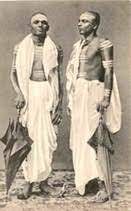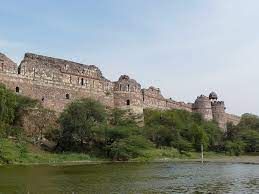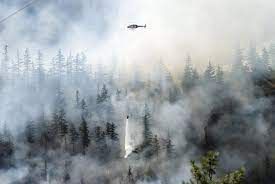UPSC Daily Current Affairs- 18th January 2023 | Current Affairs & Hindu Analysis: Daily, Weekly & Monthly PDF Download
GS-I
Who are Nattukotai Nagarathas?

Context
Sevvai Pongal which was held recently attracts hundreds of Nagarathars from across the globe.
About Nattukotai Nagarathas:
- Also called Nattukottai Chettiars, Nagarathas are a people of Indian origin, well known for their financial dealings and hospitality.
- They are followers of the Hindu religion and worship the Shiva and Muruga deities of the Hindu faith.
- They belong to a very prolific Business Community, who in olden days moved out of India to foreign lands like Burma, Ceylon, Java, Sumatra, Malaysia, Singapore & Vietnam (Saigon) .
- They hail from a place called Chettinad, an area situated in the South-Eastern region of Tamil Nadu.
- They are considered the pioneers of modern banking.
- They introduced concepts like pattru (debit), varavu (credit), selavu (expenditure), laabam (profit) and nashtam (loss). These are all collectively known as iynthogai (trial balance) - a unified document which reflects the current financial status of the business at any given time.
- They created 96 villages and built 9 temples with each family owing allegiance to a single temple only.
- The Nagarathars were the primary providers of capital to Burmese cultivators through much of the colonial period.
Chettinad region:
- Almost centrally located in the southern Indian state of Tamil nadu, Chettinad is a culturally and historically important region famous for its unique cuisine, agriculture and architecture.
- The origin of Chettinad begins in the 13th century when the Nattukottai Chettiars migrated to Karaikudi.
- The new settlement eventually became the Chettinad region (Land of the Chettiars) of 96 villages (in 1947,) but now due to the movement of people out of certain villages, has diminished to about 75 villages.
- Chettinad has well planned towns provided with well defined roadways, reservoirs to store and supply water to the town, a planned market place, temples and everything, providing the basic needs of people.
Source: PIB
Purana Qila

Context
Archaeological Survey of India, ASI is all set to begin excavation at Delhi’s Purana Qila again – third time after excavations in the year 2013-14 and 2017-18.
- For the exposure and preservation of the trenches that were excavated in previous years.
- Evidence of layers predating the Mauryan period was found.
Purana Qila:
- Located in South Eastern part of New Delhi
- Purana Qilla, the 16th-century fort, was built by Sher Shah Suri and second Mughal emperor Humayun. The fort is standing on a site with thousands of years of history.
- Identified as ancient settlement of Indraprastha, a continuous habitation of 2500 years at Purana Qila was established in earlier excavations.
- Painted grey ware, belonging to 900 BC, an earthen pottery sequence from Maurya to Shunga, Kushana, Gupta, Rajput, Sultanates, and Mughal periods.
- Excavated Artefacts such as sickles, parers, terracotta toys, kiln-burnt bricks, beads, terracotta figurines, seals and dealings excavated.
- Historian Alexander Cunningham identified the fort with that of Indraprastha
- A fortification wall about 30 metre long was also found.
- Three arched gateways: the Bara Darwaza (Big Gate) facing west, which is still in use today; the south gate, also popularly known as the ‘Humayun Gate’ and lastly, the ‘Talaqi Gate’, often known as the “forbidden gate”.
- All the gates are double-storeyed sandstone structures flanked by two huge semi-circular bastion towers, decorated with white and coloured-marble inlays and blue tiles.
- They are replete with detailing, including ornate overhanging balconies, or jharokhas, and are topped by pillared pavilions (chhatris), all features that are reminiscent of Rajasthani architecture as seen in the North and South Gates, and which were amply repeated in future Mughal architecture.
- It also has Qila-i Kuhna Mosque and the Shermandal, both credited to Sher Shah
Source: newsonair
GS-II
What is an Advance Medical Directive/Living will?

Context
Recently, a Constitution bench of the Supreme Court (SC) questioned the utility of executing an advanced medical directive in India when a person is anyway free to refuse invasive treatment and accept death.
About Advance Medical Directive/Living will:
- What is it? It is a document prescribing a person's wishes regarding the medical treatment the person would want if he/she was unable to share his/her wishes or not in a position to make an informed decision by reason of being unconscious or in a coma.
- Legality of Advance Medical Directive in India:
- Supreme Court in Common Cause vs. Union of India, 2018 recognised that a terminally-ill patient or a person in persistent vegetative state can execute an “advance medical directive” or a “living will '' to refuse medical treatment and gave sanction to passive euthanasia and living will/advance directives.
- The court also laid down principles relating to the procedure for execution of living will.
- Who can draw up an Advance Medical Directive/Living Will?
- An adult who is of a sound and healthy mind and in a position to communicate, relate and comprehend the purpose and consequences of executing the document.
- It must be voluntary.
- Elements of a Living will:
- It should be in writing and should clearly state as to when medical treatment may be withdrawn or if specific medical treatment that will have the effect of delaying the process of death should be given.
- Instructions must be absolutely clear and unambiguous.
- It should mention whether the patient may revoke the instructions/authority at any time.
- It should specify the name of a guardian or close relative who, in the event of the patient becoming incapable of taking decision at the relevant time, will be authorized to give consent to refuse or withdraw medical treatment
- If there is more than one valid Advance Directive, the most recently signed Advance Directive will be considered as the last expression of the patient‘s wishes and will be implemented.
- How is living will recorded? It should be signed by the patient in the presence of two witnesses, preferably independent, and countersigned by a jurisdictional Judicial Magistrate First Class (JMFC), so designated by the concerned district judge.
- When and by whom can it be given effect to? When the person becomes terminally ill and is undergoing prolonged medical treatment with no hope of recovery and cure of the ailment, the treating physician, when made aware about the Advance Directive, has to ascertain the genuineness and authenticity of the document from the jurisdictional JMFC before acting upon the same.
What is active and passive euthanasia?
- Active euthanasia: It occurs when the medical professionals, or another person, deliberately do something that causes the patient to die.
- Passive euthanasia: It occurs when the patient dies because the medical professionals either don't do something necessary to keep the patient alive, or when they stop doing something that is keeping the patient alive.
Source: The Hindu
Minorities in India

Context
What is National Commission for Minorities?The Supreme Court has expressed displeasure over six states and UTs not yet giving their comments to the Centre on the issue of identification of minorities at the state level.
- The Union Government set up the National Commission for Minorities (NCM) under the National Commission for Minorities Act, 1992.
- Initially, five religious communities, viz., Muslims, Christians, Sikhs, Buddhists and Zoroastrians (Parsis) were notified as minority communities by the Union Government.
- Further, in 2014, Jains were also notified as another minority community.
- On the lines of NCM, State governments also set up State Minorities Commissions in their respective State Capitals.
- These organizations are set-up to safeguard and protect the interests of minorities.
- Aggrieved persons belonging to the minority communities may approach the concerned State Minorities Commissions for redressal of their grievances.
- Moreover, they may also send their representations to the National Commission for Minorities, after exhausting all other official mechanism of remedies available to them.
- The basic ground for a community to be nominated as a religious minority is the numerical strength of the community.
- Muslims, Sikhs, Christians, Buddhists, Jain and Zoroastrians (Parsis) have been notified as minority communities under Section 2 (c) of the National Commission for Minorities Act, 1992.
- As per the Census 2011, the percentage of minorities in the country is about 3% of the total population of the country.
- The population of Muslims are 14.2%; Christians 2.3%; Sikhs 1.7%, Buddhists 0.7%, Jain 0.4% and Parsis 0.006%.
- The Constitution uses the term 'minority' without defining it.
- It refers to Minorities as those ‘based on religion or language’.
- The rights of the Minorities have been spelt out in the Constitution in detail.
- In Part III of the Constitution, which deals with the Fundamental Rights, it is divided into two parts viz. (a) the rights which fall in the ‘common domain’ and (b) the rights which go to the ‘separate domain’.
- In the ‘Common Domain’, the following fundamental rights and freedoms are guaranteed –
- Article 14; Article 15 (1) & (2); [Article 15 (4)]; Article 16(1)&(2); Article 16(4); Article 25(1); Article 26; Article 27; Article 28; Article 15 (4).
- In the ‘Separate Domain’, the following fundamental rights and freedoms are guaranteed –
- [Article 29(1)]: right of ‘any section of the citizens’ to ‘conserve’ its ‘distinct language, script or culture’.
- [Article 29(2)]: restriction on denial of admission to any citizen, to any educational institution maintained or aided by the State, ‘on grounds only of religion, race, caste, language or any of them’.
- [Article 30(1)]: right of all Religious and Linguistic Minorities to establish and administer educational institutions of their choice.
- [Article30 (2)]: freedom of Minority-managed educational institutions from discrimination in the matter of receiving aid from the State.
- [Article 347]: special provision relating to the language spoken by a section of the population of any State.
- [Article 350 A]: provision for facilities for instruction in mother-tongue at primary stage.
- [Article 350 B]: provision for a Special Officer for Linguistic Minorities and his duties.
- Sikh community’s right of ‘wearing and carrying of kirpans’.
- The Supreme Court of India was hearing a batch of petitions challenging nation-wide identification of minorities.
- The Central government had written a letter to all States/UTs seeking comments on the issue of 'identification and notification of religious and linguistic minorities’ in India.
- 6 States/UTs have not responded to the notification yet.
- In this regard, the Supreme Court has asked the Central government that why these states/union territories are not responding to its query.
- A batch of petitions had sought a direction asking the Central government to define the term ‘Minority’ and lay down ‘guidelines for identification of minorities at district level’.
- This is to ensure that only those religious and linguistic groups, which are socially, economically, politically non-dominant and numerically very inferior, get the benefits and protections guaranteed under Article 29 and Article 30.
- The petitioners challenged the constitutional validity of Section 2(c) of the National Commission for Minorities Act, 1992 which gives Central government the power to notify minorities.
- The Central government responded that a stand in this regard can be taken only after wide consultations with State governments and other stakeholders to avoid unintended complications in future.
- In May 2022, the SC had directed the Central government to hold consultations with the States/UTs w.r.t. issue of identification of Minorities in India.
Source: Indian Express
GS-III
ChatGPT
Context
In 2022, OpenAI opened its most recent and powerful AI chatbot, ChatGPT, to test its capability.
- It amazed netizens across the world by answering questions, fixing broken code, etc.
- Some users have been testing the bot’s capability to do nefarious things – Illicit actors have tried to bypass the tool’s safeguards and write malicious code.
ChatGPT:
- ChatGPT is a ‘conversational’ AI based on OpenAI’s GPT 3.5 series of language learning models (LLM).
- This is a kind of computer language model that relies on deep learning techniques to produce human-like text based on inputs.
- It has gone viral is because of the kind of responses it gives, being seen as a replacement for much of the daily mundane writing, from an email to even college-style essays.
- The model is trained to predict what will come next, and that’s why one can technically have a ‘conversation’ with ChatGPT.
- It is trained using “Reinforcement Learning from Human Feedback (RLHF).”
- OpenAI uses Microsoft Azure’s cloud infrastructure to run these models.
- Users have the option of downvoting or upvoting a response.
Applications:
- It will answer queries just like a human would.
- Such as tips on how to set up a birthday party, write an essay on why parliamentary democracy is better, and even a fictional meeting between two well-known personalities.
- It can answer follow-up questions and can also admit its mistakes, challenge incorrect premises, and reject inappropriate requests.
- It is being seen as a replacement for the basic emails, party planning lists, CVs, and even college essays and homework.
- It can also be used to write code, solve math equations, and even spot errors in code.
- It can write fiction but not at the level of a human.
Ethical Challenges:
- Biased content – Since in case of machine learning, artificial intelligence is developed based on input of information, incorrect or biased information can create “biased” content
- The chatbot displayed clear racial and sexist biases
- Lack of objectivity – Its knowledge of the world and events after 2021 is limited and may give inaccurate results.
- Lack of authenticity- It could give “plausible-sounding but incorrect or nonsensical” data that raises issues of credibility such as it can sometimes overuse certain phrases
- Lack of relevance – Although the chatbot gives grammatically correct answers, these lack context and substance.
- Write Malware– ChatGPT is programmed to block obvious requests to write malicious Code for amateur coders looking to build malware.
- However, the more seasoned ones could trick the bot into correcting or enhancing malicious code they have partially developed.
- They could get through the system by phrasing their request in an innocuous way.
- Phishing emails – OpenAI notes that asking its bot for illegal or phishing content may violate its content policy. But for someone trespassing such policies, the bot provides a starting point.
- Cybersecurity firm Check Point’s researchers tested the bot by asking it to draft a phishing email for a fictional webhosting firm – ChatGPT gave an impressive ‘phishing email’ in reply.
- The response section included a warning that read: “This content may violate our content policy. If you believe this to be in error, please submit your feedback – your input will aid our research in this area.”
- Plagiarism chokepoint
- In education sphere, the bot could be used to turn in plagiarised essays that could be hard to detect for time-pressed invigilators since GPT models write in a statistically vanilla way.
- New York City’s education department banned ChatGPT in its public schools.
- Privacy and security concerns – Large language models (LLM) can be easily automated to launch complicated attack processes to generate other malicious artifacts.
- Inherently buggy code
- Stack Overflow, a forum for software programmers, banned its users from using any AI-generated code on the platform.
Suggestions for future:
- Provide a universal framework of values, principles and actions to guide States in the formulation of their legislation, policies or other instruments regarding AI, consistent with international law.
- Protect, promote and respect human rights and fundamental freedoms, human dignity and equality, including gender equality; to safeguard the interests of present and future generations; to preserve the environment, biodiversity and ecosystems; and to respect cultural diversity in all stages of the AI system life cycle
- Promote equitable access to developments and knowledge in the field of AI and the sharing of benefits, with particular attention to the needs and contributions of LMICs, including LDCs, LLDCs and SIDS
- In education sphere – where the answers coming from a human and ChatGPT are in a similar zone, a different kind of pedagogy could help such as looking beyond summarisation and reporting based on what is available on the Internet can help.
- Proportionality and Do No Harm – none of the processes related to the AI system life cycle shall exceed what is necessary to achieve legitimate aims
- Right to Privacy, and Data Protection – Data for AI systems be collected, used, shared, archived and deleted in ways that are consistent with international law and in line with the values and principles
- Human oversight and determination – it is always possible to attribute ethical and legal responsibility for any stage of the life cycle of AI systems to physical persons or to existing legal entities.
- Human oversight refers thus not only to individual human oversight, but to inclusive public oversight
Way forward
- National and international governmental and non-governmental organizations, as well as transnational corporations and scientific organizations must collaborate to generate universal ethical values for AI.
- In education sphere, helping educators think through the different types of prompts to best assess students to help them stay away from using ChatGPT is important
Source: DTE
Role of Microfinance Institutions in Financial Inclusion and Economic growth
Context
With the Insurance Regulatory and Development Authority of India (Irdai) increasing the maximum number of tie-ups for corporate agents and insurance marketing firms, insurance companies are approaching microfinance institutions for partnerships to leverage their last-mile connectivity for deeper penetration into the rural market.
About Microfinance and Microfinance Institutions:
- Microfinance is a form of financial service which provides small loans and other financial services to poor and low-income households.
- The definition of “small loans” varies between countries.
- In India, all loans that are below Rs. 1 lakh can be considered as microloans.
- Microcredit is delivered through a variety of institutional channels viz:
- Scheduled commercial banks (SCBs) (including small finance banks (SFBs) and regional rural banks (RRBs)).
- Cooperative banks.
- Non-banking financial companies (NBFCs).
- Microfinance institutions (MFIs) registered as NBFCs as well as in other forms.
- MFIs are financial companies that provide small loans to people who do not have any access to banking facilities.
- MFI promotes financial inclusion which enables the poor and low-income households to come out of poverty, increase their income levels and improve overall living standards.
- It can facilitate achievement of national policies that target poverty reduction, women empowerment, assistance to vulnerable groups, and improvement in the standards of living.
Significance of Microfinance Institutions:
- It makes credit available easily thereby bettering the income and employment scenario.
- It helps in serving the under-financed sections such as women, unemployed people and those with disabilities.
- It helps low-income households to stabilize their income flows and save for future needs.
- In good times, microfinance helps families and small businesses to prosper, and at times of crisis it can help them cope and rebuild.
- Families benefiting from microloans are more likely to provide better and continued education for their children.
Challenges of MFI:
- Inadequate Data: Despite the fact that total loan accounts have been rising, it is unclear how these loans will actually affect clients’ levels of poverty because the available information is dispersed.
- Over-indebtedness: The two main issues that are straining the microfinance sector in India are the expanding trend of consumers taking out multiple loans and ineffective risk management.
- The microfinance industry offers loans with no security, which raises the possibility of bad debts.
- Eroding social objective: The social goal of MFIs—to enhance the lives of society’s marginalised groups—seems to have been weakening over time as they pursue development and profitability.
- Regulatory Issues: Microfinance institutions have entirely different needs and organisational structures than other traditional lending institutions.
- The microfinance sector is finding it difficult to survive due to a lack of an adequate regulatory framework.
- Poor structuring of organization: Lack of standardised data and fraud management system creates more NPAs and affects the credibility of the institution.
- Lending for Non-income Generating Purposes: The percentage of loans used for non-income generating purposes may be significantly greater than the RBI’s limit of 30% of the MFI’s total loans.
Way Forward:
MFIs should concentrate on developing a scalable and sustainable microfinance strategy with a clear mission for both economic and social welfare. The microfinance institutions should be encouraged by RBI to use a “social impact scorecard” to track their social impact. Best usage of technological integration will be able to assist MFIs in providing services as well as repayment collection processes.
Source: Financial Express
Neelakurinji

Context
The Ministry of Environment, Forest and Climate Change (MoEFCC) has listed Neelakurinji ( Strobilanthes kunthiana) under Schedule III of the Wildlife (Protection) Act, 1972, including it on the list of protected plants.
About Neelakurinji:
- It is a shrub that is found in the shola forests of the Western Ghats in Kerala, Karnataka and Tamil Nadu.
- Locally known as Kurinji, the flowers grow at an altitude of 1,300 to 2,400 metres.
- Nilgiri Hills, which literally means the blue mountains, got their name from the purplish blue flowers of Neelakurinji that bloom only once in 12 years.
- Kurinjimala Sanctuary of Kerala protects the Kurinji in approximately 32 km2 core habitat in Kottakamboor and Vattavada villages in Idukki district.
- Kurinji Andavar temple located in Kodaikanal of Tamil Nadu dedicated to Tamil God Murugan also preserves these plants.
- The Paliyan tribal people living in Tamil Nadu used it as a reference to calculate their age.
- Karnataka has around 45 species of Neelakurinji and each species blooms at intervals of six, nine, 11 or 12 years.
- Besides the Western Ghats, Neelakurinji is also seen in the Shevroy in the Eastern Ghats, Sanduru hills of Bellary district in Karnataka.
Source: The Hindu
FireAId initiative

Context
The FireAId initiative had a successful pilot as per the report at the World Economic Forum Annual Meeting 2023 being held in Davos, Switzerland.
FireAId Initiative:
- It was launched in 2022 by the World Economic Forum (WEF)
- It aims at using artificial intelligence to effectively manage wildfire.
- The multistakeholder initiative that collaborates resources from governments, civil society and the private sector was formulated by Koç Holding, Turkey’s largest industrial conglomerate, and was joined by Deloitte, an international professional services network, that brought on board its own AI technology to develop a ‘digital twin’ for fire management.
- The project was made operational in the South Aegean and West Mediterranean region of Turkey, since a quarter of the country’s wildfires occurred there in 2010-2021 and accounted for 75 per cent of the total burned area during the period.
- From July-August 2021, Turkey experienced some of its worst wildfires that charred a total of 139,503 hectares.
- Static and meteorological data was used to map areas where fires can start, predicted the intensity and planned the logistics required for efficient response.
- The predictions reduced both response time and risk to firefighters
- The project can now be scaled up and expanded to other locations.
Source: DTE
|
38 videos|5288 docs|1117 tests
|
FAQs on UPSC Daily Current Affairs- 18th January 2023 - Current Affairs & Hindu Analysis: Daily, Weekly & Monthly
| 1. What are the three main subjects covered in the UPSC exam? |  |
| 2. What is the significance of General Studies Paper II (GS-II) in the UPSC exam? |  |
| 3. What is the role of General Studies Paper III (GS-III) in the UPSC exam? |  |
| 4. What is the UPSC Daily Current Affairs? |  |
| 5. Why is it important to study current affairs for the UPSC exam? |  |


















